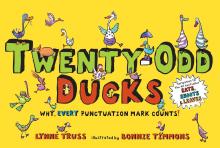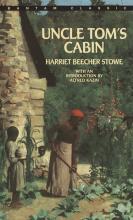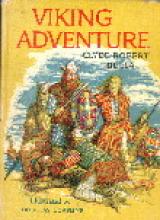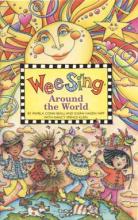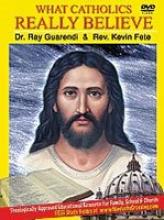No name
Twenty-Odd Ducks
Lynne Truss does it again, this time stressing the correct use of the hyphen, parenthesis, question and exclamation marks and also more comma use. I feel that my younger kids will have a wonderful and visual grasp of punctuation as they grow up exposed to Truss' humor and fresh approach to grammar! If you haven't enjoyed her first punctuation picture books, don't miss them: Eats, Shoots and Leaves and The Girl's like Spaghetti!
Typing Tutor 10
CD ROM for Windows 95/98 and Power Macintosh Used on Windows ME and Windows XP systems for this review
In the era of the personal computer, good typing skills are essential. Children will benefit tremendously from learning to type while they're still in grade school, and Typing Tutor 10 is all you'll need to teach this valuable skill.
The program begins by asking for skill level (beginner, hunt-and- peck, or touch typist). Depending on the level, there may be a placement test. After that, there are 32 standard lessons, plus additional customized lessons for certain keys, or for strengthening certain fingers. A dynamic display shows the proper placement of fingers on the keyboard for each letter as it's typed. An envelope icon appears on the screen for each new lesson, containing instructions for what to do next.
A great feature of this program is the customization menu, which allows you to adapt the program in a myriad of ways. The learner (or teacher) can set the length of lessons (from 1 to 9 minutes), the background color and music (with selections from classical, jazz, pop, etc.), the font size, and more. The program has "practice sessions", with over a hundred different excerpts from books and magazines. Many of the selections are classics (Tom Sawyer, Alice in Wonderland, Sense and Sensibility). I found only one magazine article that might be objectionable (in the category of New Age, on "Channeling"). The solution is simple: use the customization screen to eliminate that category as a choice.
There are eight highly entertaining games, which are a nice break from the lessons while still providing practice time. My kids and I have had great fun trying to outrace the leaping frog on the stone path by typing words more rapidly than the frog can jump, or trying to keep our log-rolling contestant on his spinning log by typing as rapidly and accurately as possible.
Progress reports, which can be viewed onscreen or printed out, give a thorough summary of lessons completed, length of sessions in minutes, typing speed in words-per-minute, and accuracy ratings. These make a nice portfolio entry for homeschool record-keeping.
I would recommend Typing Tutor 10 for children starting at about age 10, after they've had a few years to work on their penmanship, and at just about the time they're expected to begin writing longer reports and essays. It's versatile enough for anyone to use, though, including teens and adults.
I learned to type when I was a freshman in high school using a much earlier version of Typing Tutor (on the Commodore 64). My typing proficiency that began with this program was such that I was typing at 100 wpm + by junior year and paid my way through college with secretarial jobs. I was very pleased to find this newer version of Typing Tutor to use with my own children and find the structure and format to be quite similar. - A.V.H. (4-21-04)
Uncle Tom's Cabin
There are a plethora of resources for you to find out the plot of this book out on the web and in the bookstores (eg. Cliffs Notes!!). Many contain "spoilers". And this is OK — after all it's a classic. Moreover, the book is good even if you know what is going to happen. I had the enjoyable luxury of reading this book without having run across the spoilers and with no real knowledge of the plot. I was not required to read it in school — oh happy fault.
The story is about slavery in America. It follows the lives of two slaves in detail, Eliza and Uncle Tom, and introduces us to a great many more slaves and masters and their stories. The two belong to the same master in Kentucky. When the master falls on hard times (from his own inability to manage his estate) he ends up making a deal to sell these two — despite the fact that both of them are rather dear to him and his family. Getting wind of this Eliza decides to run for safety with her son while Uncle Tom allows himself to be taken away from his wife and young children. Eliza risks her life to save her child — running across the ice floes of a partially frozen Ohio river to escape — then finds her way along an underground network. (I won't tell you how her story comes out.) Uncle Tom is sold and resold. He is steadfast in his faith throughout — though not unchanging. Moreover, he affects those who he meets along the way.
This book is written in a very foreign style — at least to the modern reader. Chronologically Mrs. Stowe's style fits somewhere between that of the crafters of the Constitution and that of Mark Twain. But it is not so easy to put it into any other category. Her own narration is a bit archaic, overtly Christian, sometimes sarcastic, sometimes patronizing, and yet very broad minded. She calls you "gentle reader." She says "now don't you think that is fair?" when she expects you to come to the opposite conclusion. And yet she sees clearly through all the haze of the issue — i.e. the "shades of grey" everyone loves to talk about when they can't bear to say right vs. wrong. And she does more: she presents us with characters who take various positions on the slavery issue. Not just "it's right" and "it's wrong" but a wide variety of views. She allows them ample voice and reason to discourse their whole argument; she does not make them straw men; she does not mitigate or twist their ideas; she lays out the best cases for and against — and from several different angles. In the midst of this she demonstrates the effects on the PEOPLE who are subjected to the system — those who are the masters as well as those who are the slaves. It is incredibly revealing to have the whole gamut — the entire conversation — all in one accessible story. And it is incredibly convincing!!! Which is why, as legend has it, Abe Lincoln, when introduced to her for the first time declared, "So you're the little lady responsible for this big war."
This book ought to be read for a lot of different reasons.
1) Arguments aren't just fights. When properly done they are tools to get at the truth. This book shows how to argue in the best sense. Reasonable people may have views that are wrong — and can be changed by convincing. (Admittedly, most of those in this book are not, ultimately, convinced — but some are — it's good to see).
2) Style! You have to get a taste of this style of hers. It is a peculiar dish that we rarely see set before us these days (how much early 19th century do you typically read?!).
3) Faith. Uncle Tom has faith in God. It grows stronger and better through his trials. And, it has effects on those he meets and deals with to different degrees and in different ways. (That's realistic.)
4) It shows us that a story can be an extremely convincing form of persuasion.
5) There is a lot revealed about the fundamental nature of man and his free will by exploring the effects of stifling that free will via enslavement. Her characters vary wildly in their reaction to the invisible wall between master and slave. The slaves will react, contort and re-form (or de-form) themselves to this unnatural order. The slave owners must likewise be ignorant or somehow justify their actions. To the author's credit we see that the justification is sometimes wicked or perverted and sometimes just well-meaning but ultimately flawed reasoning.
6) One thing that kind of percolates up from 5) is that there is a difference between the will and the intellect. Philosophers have argued about this for millennia. Many people believe that if someone knows what the good thing is they will naturally want to do it. But knowing and doing ARE different. And some may know what is good but not do it. Some may even want to do what is not good and through an underhanded twist of the will convince themselves (and really THINK they know) that the bad is good. The sooner a person can grasp the difference between the intellect and the will the more they will be able to direct their own thoughts and actions maturely, profitably and honorably.
7) Believe it or Not! This book has some incredible (as in not believable) events. However, Mrs. Stowe, it turns out had done a lot or research. Most of the events were gathered from real events. Even the more incredible ones such as Eliza crossing the river. — Don't try that at home!!!
Age level: At least High School Freshman +/- a year. Kleenex required.
Many editions available.
Up Periscope
This dramatic story gives an accurate picture of the thrills, frustrations and dangers of life aboard a submarine. Some interesting details of military history regarding conflicts between the Japanese navy and U.S. submarines help readers understand the importance of withholding information from the enemy during wartime (especially for members of the media!). The story gets pretty intense towards the end and would be best for ages 12 or 13 and up. Although the book is currently out-of-print, Scholastic paperbacks like this tend to show up frequently at rummage sales, used book stores and used sources on the Internet such as eBay.
Copyrights 1956/1960
Upbringing
Most parenting books seem to like to preach that their way is either God's way or the natural way or the positive way, leaving the reader to believe that if they do not raise their child in this manner they are either un-Christian, unnatural or negative. So it was very refreshing to come across Upbringing by James Stenson. Mr. Stenson has started two boys' high schools and been an observer of Catholic families for many years. His observations are based on his experiences with successful families. The proof is in the pudding, so to speak. In Upbringing, he puts together a list of characteristics that are common to families that have raised their children to become successful adults.
The book is a quick and easy read. It is designed for discussion with other families, but your spouse will do if this is not your cup of tea. Mr. Stenson begins with a discussion of character and the virtues/qualities that we would want to see in our children. (including the theological virtues - Faith, Hope and Charity and the cardinal virtues - prudence, justice, fortitude and temperance). He explains them in easy to understand language and then argues that a lack of these virtues in an adult boils down to immaturity or childishness. The opposites of these 7 virtues, faithlessness, despair, egoism, immature judgement, irresponsibility, softness and self-indulgence are all (with the exception of despair) vestiges of childhood. He links a lack of temperance in childhood with an inability to practice a religion that requires any sort of sacrifice in adulthood. He then goes on to list 7 reasons why there is such a lack of character formation in children today.
The second chapter profiles successful parents. He notes that the diversity among successful parents is striking. Some are energetic extroverts, some are quiet and mild-mannered, and all have personal faults and doubts. Nevertheless, they all have several traits in common.
In the 3rd chapter of the book, Mr. Stenson lists 18 Life Lessons in Reality. These are fun. They were quite a shock to me when I finally got out on my own. Things like: School is not Life, TV is not Life, Comfort and Convenience are a By-Product of a Successful Life, not its Purpose, etc.
I encourage you to obtain a copy of any of James Stenson's books. Other titles are Preparing for Peer Pressure, Successful Fathers, Preparing for Adolescence, and Lifeline, The Religious Education of Children.
Viking Adventure
The adventure soon takes an ominous turn as the ship encounters storms and the fears and dreams of the ship's owner, Halfred, who wants to turn back. The quarrel reaches a pitch between Gorm and Halfred, with murderous results that change Sigurd's life forever.
This book is one of many historical adventures written by Clyde Robert Bulla, and it is fast-paced and exciting like his others. Because of this, it might be a good book for an older reluctant reader. There is an interesting sub-plot about the value of the written word - at the beginning Sigurd refuses to learn to read and write because he doesn't see the point in his warrior culture, but in the end he changes his views when he has a valuable story to tell.
The terse style and fast pace is reminiscent of Norse sagas, and the lesson - that it takes hard work to become strong and skilled, and that even a warrior culture needs readers and writers - is a good one for a young person struggling to become literate. The reading level is probably about 2nd or early 3rd grade. I recommend this book for children ages 6 and up - a younger child could probably understand it, but might be upset by the fact that several main characters die during the course of the story.
Wee Sing: Around the World
This audio tape or CD and booklet take you around the world, continent by continent, by introducing you to favorite folks songs or children's songs from each country. Someone from each country introduces themselves in their own language and then in English and the song is sung in each language as well. The booklet includes all the words to the songs in the native language and English, simple piano notation and guitar chords. There are charming illustrations including each country's flag. You'll also find a little description of each country. This has been our family's very favorite tape in the Wee Sing series.
What Bluebirds do
We picked a full bag of mostly new picture books from the library as we don't visit it as often as during the school year. Several new publications were examined by my review team – our children. Some were bold, creative, large and colorful. Fiction, informational, biographies: we read many different books over a number of days. In my mind as I hear their comments and listen or watch their reading enjoyment I run my own elimination process.
A simple, quiet, gentle book was the clear winner this time, beating all of its "louder" competitors: What Bluebirds Do, by Pamela Kirby. It won all of our hearts with the true photographic story of a pair of bluebirds in the backyard of the author's house. Beautiful photography, a list of resources, and a careful description of the bluebirds' life are combined into the most delightful nature-book we have come across in a while!
What Catholics Really Believe
13 - 1/2 hour episodes on DVD

